#godfrey qualls
Photo
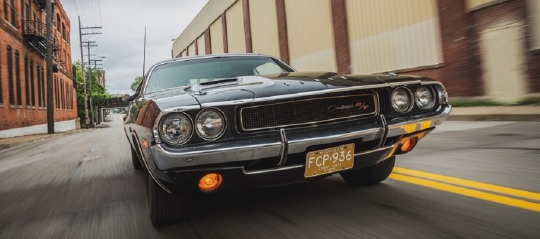
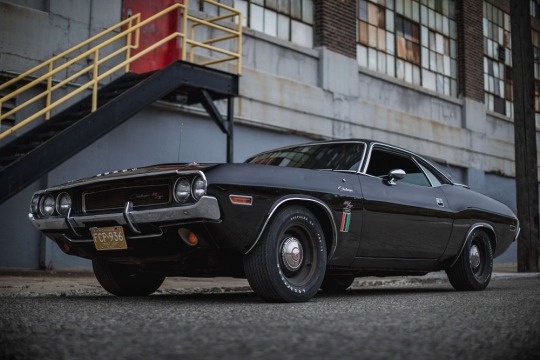
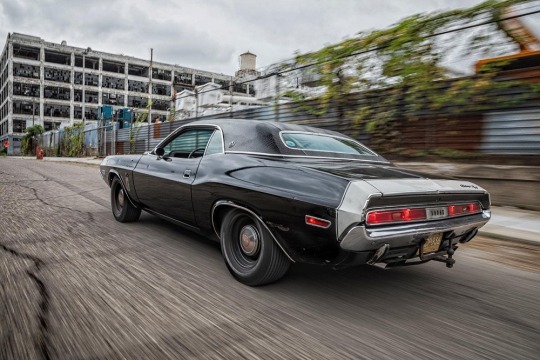
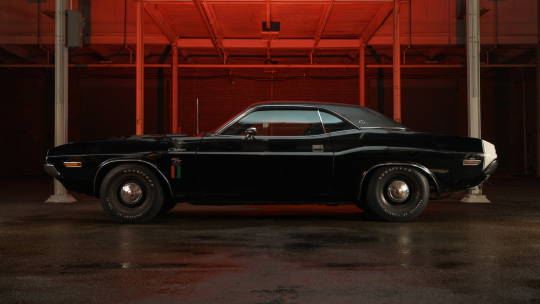




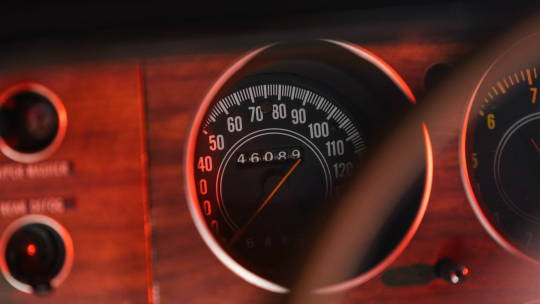
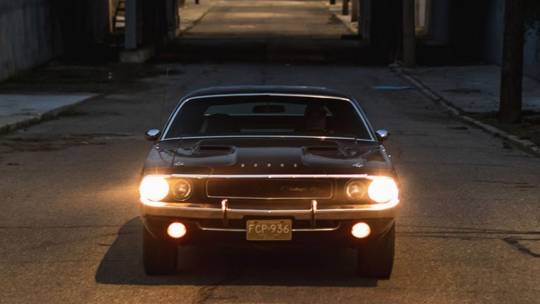
1970 Dodge HEMI Challenger R/T SE “Black Ghost”
Mecum Auctions
#art#design#sportcars#sportcar#dodge#challenger#HEMI#black ghost#mecumauctions#iconic car#street race#godfrey qualls#legend#sports#dodge challenger
672 notes
·
View notes
Photo


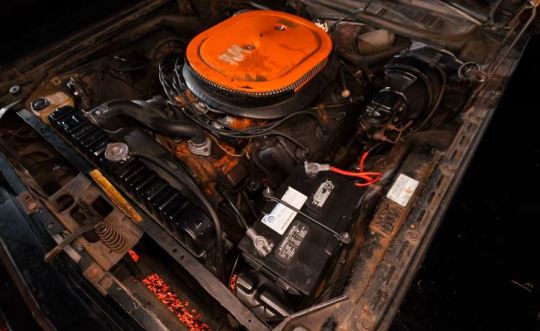
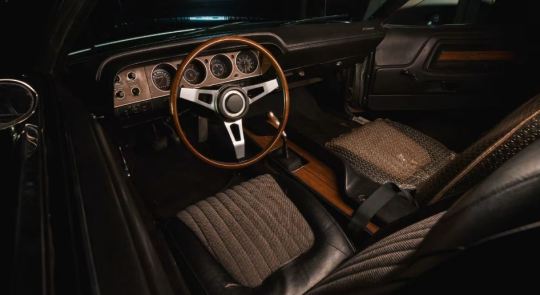


the black ghost
#dodge#challenger#hemi#hemi challenger r/t se#the black ghost#gator grain top#mecum#godfrey qualls#raynal brothers dodge
255 notes
·
View notes
Text
“Starting in the spring of 1970, this black HEMI engine-powered Challenger would show up at various racing spots around Metro Detroit – sometimes Woodward or Telegraph, sometimes one of the more out-of-the-way locations – and beat anyone who was willing to line up. After beating everyone who wanted to race, the menacing Dodge would disappear into the night for weeks or even months. No one in the racing scene knew who was driving this Dodge Challenger, so it was unclear why he would disappear for long periods of time, but everyone in the Detroit street scene knew that when that car showed up, there was a good chance that the quickest cars in attendance were going to take a loss.
Due to the way that this Dodge Challenger R/T would randomly show up then disappear for long periods of time, other local racers began calling the car “The Black Ghost”. The Black Ghost would continue this pattern of handing out losses around the Detroit street racing scene until the mid-1970s, when the car disappeared forever. No one knew what happened to the car or the incredible racer behind the wheel, but after 1975, the HEMI engine-powered Challenger known as The Black Ghost was never again seen in the Detroit racing scene.
(…)
Godfrey Qualls was drafted into the United States Army in 1964, serving as a paratrooper in the 82nd Airborne Division until he returned to the U.S. with a Purple Heart in the mid-1960s after being injured by a hand grenade.
On December 5, 1969, Qualls took delivery of his 1970 Dodge Challenger R/T Special Edition, which was one of just 23 R/T SE models built with the 426 HEMI engine and the 4-speed manual transmission for that model year. The car also came equipped from the factory with the Super Track Pack which included a Dana 60 rear differential with 4.10 gears and Sure-Grip, a Hurst pistol grip shifter, houndstooth interior, hood pins, the white tail stripe and a black vinyl top. The car was mistakenly built with the gator skin pattern rather than the plain black vinyl, which Qualls didn’t love at the time, but it came to be one of the key recognizable traits of the legendary street racer.
In stock form, Qualls’ HEMI engine-powered Challenger would beat pretty much anything on the street, but as some added insurance, he made a few basic modifications. He removed the mufflers, allowing the 426 HEMI engine to breathe a bit easier, he installed an aftermarket ignition coil and replaced the standard rear street tires with a set of sticky drag slicks. He also added a small African flag decal to each front fender and an ignition key-kill system was added to the driver’s side front fender to keep the car secure around Detroit. With those few changes, Qualls’ Challenger hit the streets in the spring of 1970 and the legend of The Black Ghost began to take shape.
Meanwhile, also in 1970, Godfrey Qualls was hired by the Detroit Police to work as a motorcycle officer in the area of Traffic Enforcement. His passion for motorcycles led him to install a trailer hitch assembly on his Dodge Challenger R/T as well, which was a fairly rare upgrade for the top street brawlers of the era. His role on the police force likely played a role in the sporadic street racing appearance schedule of The Black Ghost Challenger. Had Qualls gotten caught street racing, he would have likely lost his job, so he would hit the streets, do some racing and then tuck the car away in the garage until police attention would die down. Being a police officer, Qualls would have been familiar with any targeted enforcement of the street racing scene, so he would know when it was safe for him to race and when it was best for him to stay away. This was also why he made sure that no one in the local scene knew who was driving that unbeatable Dodge Challenger in the early-to-mid 1970s.
Godfrey Qualls never got caught street racing and he retired from the Detroit Police Department in 2007 after 37 years of service.
Knowing who Godfrey Qualls was and what he did for a living answered the question of why The Black Ghost Dodge Challenger was such a mystery and why it would disappear for long periods of time, but what happened after 1975 that led to the car vanishing from the local street racing scene?
Well, in 1977, Qualls joined the Army National Guard, participating in Special Forces training and receiving his Green Beret in the late 1970s, serving with the National Guard through 2002. With Qualls rejoining the Army and still working as a Detroit police officer, he seemingly retired from dominating the local street racing scene and his legendary muscle car went into a long period of storage. According to Gregory Qualls, prior to him taking ownership, his father’s Challenger was last registered and insured for street use on March 19, 1976. The car then sat in his parents’ garage on jackstands from 1980 until 2016, at which point Gregory took the car out of storage to begin restoring it for show use.
(…)
Since emerging from decades of storage, the Qualls’ 1970 Dodge Challenger R/T SE has won a long list of awards, including the Spirit of Detroit Award at Concours d’Elegance of America in Plymouth, Michigan in 2021, The National Automotive Heritage Award at the Carlisle Chrysler Nationals in 2018 and the Muscle Car & Corvette Nationals Celebrity Pick Award in 2017. The most prominent recognition came in 2020 when this Challenger was added to the National Historic Vehicle Registry, securing its place in automotive history.”
youtube
“A Hemi-powered 1970 Challenger R/T SE four-speed in #2 (Excellent) condition is currently valued at more than $350,000, although this car’s near-mythical status and history will certainly elevate it above its brethren.
How high, you may wonder? Hagerty valuation specialist John Wiley explains how the car’s unique history will come to play when the Black Ghost hits the auction block.
“Unrestored, culturally iconic muscle cars such as the 1968 Bullitt Mustang sell for well over seven figures, and it’s not unreasonable to expect the Black Ghost might do the same,” Wiley said.”
1 note
·
View note
Text

1970 Dodge Challenger
The legend returns: Unveiling the powerful 1970 Dodge Challenger ‘Black Ghost’ with its iconic HEMI V8 engine
Posted on March 4, 2024
Emerging from its mysterious past as a street drag racer piloted by a police officer, the 1970 Dodge Challenger “Black Ghost” has now claimed the title of the most coveted classic Mopar.
Honoring its legacy, Dodge has introduced a contemporary tribute based on the 2023 Challenger Hellcat Redeye Widebody. In addition to this homage, the enigmatic “Black Ghost” is gearing up for its moment in the spotlight at an upcoming auction.
Captivating audiences at Kissimmee 2023 in January, the “Black Ghost” was proudly displayed alongside its contemporary counterpart. For those eager to witness its numbers-matching 426-cubic-inch (7.0-liter) HEMI V8 come to life, YouTube’s “DtRockstar1” recently shared footage of the legendary vehicle making its grand appearance at a few classic car events.
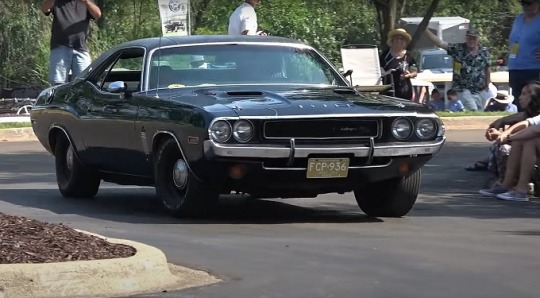
Although the video doesn’t showcase drag racing or burnouts, the striking all-black 1970 Challenger, now road-worthy after years in storage, is a breathtaking sight. Remarkably, the car remains in near-original condition, save for a few upgrades like a rebuilt brake booster, new carbs, radiator, master cylinder, and tires.
But what truly sets the “Black Ghost” apart from other classic cars, and how did it earn its intriguing moniker?
The original owner, Godfrey Qualls, was a Detroit police officer by day and a secretive drag racer by night. Risking his career, he would make unexpected appearances at local gatherings, dominate quarter-mile races, and then mysteriously vanish.

While Godfrey’s Challenger wasn’t entirely stock during its racing heyday, he kept modifications minimal, opting for a muffler delete, an aftermarket coil, and slick rear tires on stock wheels.
The HEMI V8’s impressive 425-horsepower output was more than enough for him to claim countless victories before disappearing for good in 1975. By then, the “Black Ghost” had already secured its legendary status in Detroit.
The enigmatic Challenger driver’s true identity remained a secret for decades until Godfrey revealed his thrilling drag-racing tales to his son, Gregory. Inheriting the car when his father passed away, Gregory brought the “Black Ghost” to light in 2017, sharing the astounding story of officer Qualls and his legendary vehicle.

Beyond its captivating history, this Mopar is an exceptional rarity from the golden age of muscle cars. Of the nearly 77,000 Challengers sold in 1970, a mere 356 were equipped with the formidable 426-cubic-inch HEMI V8. Godfrey’s choice of a four-speed manual gearbox further refines the car’s status to one of just 136 produced.
But the exclusivity doesn’t end there. With the added SE package, it’s one of only 60 Challengers ordered with the bundle. Considering the color and other options, it’s possible that fewer than 10 such examples were ever made.

In summary, this Challenger is the epitome of rarity, boasting a captivating story worthy of a book. It stands as a highly collectible classic that could very well be more valuable than any other 1970 Challenger in existence.
#dodge challenger#hemi#car#cars#muscle car#american muscle#mopar#moparperformance#moparnation#moparworld#dodge#challenger
176 notes
·
View notes
Text
The mysterious 1970 Dodge Challenger 'Black Ghost' is up for auction and worth a fortune
The mysterious 1970 Dodge Challenger ‘Black Ghost’ is up for auction and worth a fortune
A once-mythical muscle car will be crossing the auction block soon.
The 1970 Dodge Challenger R/T SE was owned by Detroit police officer and decorated U.S. Army veteran Godfrey “Dennis” Qualls, who used it for illegal street racing on the famed Woodward and Telegraph Avenues.
Qualls kept a low profile because of his profession and didn’t mingle much with the other racers.
He’d just show up every…
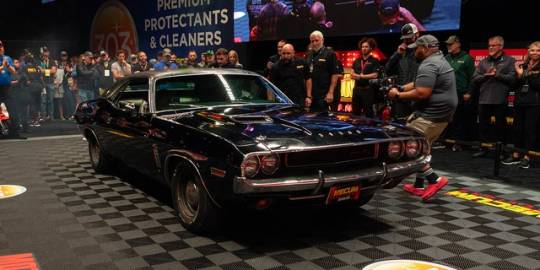
View On WordPress
0 notes
Video
youtube
Historic Vehicle Association “The Black Ghost: Street Racing Legend - 1970 Dodge Challenger 426 Hemi” (2020)
#dodge challenger#muscle car#detroit#african-american#street racing#godfrey qualls#classic car#black ghost#father and son#drag racing#michigan#1970s#video
3 notes
·
View notes
Text




Godfrey Qualls' BlackGhost 1970 Dodge HEMI Challenger RT SE 426/425 HP via http://hemmings.com/.../black-ghost-a-street-racing-cops...
142 notes
·
View notes
Photo


The Black Ghost 1970 Challenger R/T SE 426 triple black. Still owned by the son of Godfrey Qualls. He ordered it, with ALL the options he wanted in 1969. He was a decorated soldier of the 82 Airborne and a respected Detroit police officer.
0 notes
Text
The Black Ghost: Street Racing Legend - 1970 Dodge Challenger 426 Hemi Documentary
The Black Ghost: Street Racing Legend - 1970 Dodge Challenger 426 Hemi Documentary
#musclecar #classiccar #vintagecar #car #carsofinstagram #cargram #v8
The Black Ghost: Street Racing Legend is a new documentary from the American Historic Vehicle Association about a 1970 Dodge Challenger R/T SE ordered new by a man named Godfrey Qualls.
This triple black 426 Hemi would become a legend in the underground street racing scene in Detroit and only years later would people discover that the car was being raced by an off-duty cop.
Godfrey Qualls was a…

View On WordPress
0 notes
Text
youtube
https://youtu.be/Jd0io1zktqI
Great story.
“Don’t fucking give my car away” —Godfrey Qualls and the Black Ghost
0 notes
Note
Hi! I've been following for a while and I always see you guys giving some great advice out to roleplayers and providing awesome fc recs, but I'm curious to know if you guys have any favorite fcs yourself? If so, could you please share them? Thank you !
Cat:
Kellita Smith (48) Black.
Ma Dong-Seok (46) Korean.
Kirsten Vangsness (44)
Matt Cedeño (42) Afro-Cuban / Irish-English.
Gong Yoo (37) Korean.
Ruth Negga (35) Ethiopian / Irish.
Zoe Tapper (35)
Brandon Jay McLaren (35) of Grenadian and Trinidad and Tobago descent.
Jesse Garcia (34/35)
Évelyne Brochu (33)
Zach Roerig (32)
Charles Michael Davis (32) African American / Filipino.
Ni Ni (28) Chinese.
Prachi Desai (28) Indian.
Ben Cura (28)
Luke Pasqualino (27)
Rob Raco (27) - I don’t like Ricerstale but I saw his face on the dash and I appreciate it!
Jade Hassouné (26) Lebanese-Canadian.
Phillipa Soo (26) Chinese / White.
Olly Alexander (26) non-binary, uses he/him!
Aisha Dee (23) only stated as “mixed.“
Fady Elsayed (23) English, Egyptian.
Toni Mahfud (22)
Liza Koshy (21) Indian / White.
Nat Zang (21)
Iman Meskini (20) Tunisian.
Herman Tømmeraas (20)
Laith Ashley (?) Dominican - trans!
Khoudia Diop (?) Senegalese.
Evalyn Jake (?) - trans!
Cengiz Al (?)
Mouse:
LL Cool J (49) African-American.
Shemar Moore (47) African-American.
Grace Park (43) Korean.
Barrett Foa (39)
Jesse Lee Soffer (33)
Lee Donghae (30) Korean.
Hunter Parrish (30)
Park Bo-young (27) Korean.
Park Hyung-sik (25) Korean.
Logan Lerman (25)
Bonus! Our pals faves:
Peter Dinklage (47)
John Cho (44) Korean.
Brooke Elliott (42)
Kristin Bauer van Straten (43)
Rutina Wesley (38) African American.
DJ Qualls (38)
Freema Agyeman (38) Ghanaian / Iranian.
Merritt Wever (36)
Russel Tovey (35)
Ricky Whittle (35) Afro-Jamaican / English.
Alfonso Herrera (33)
Steve Yuen (33) Korean.
Zach Woods (32)
Jessica Parker Kennedy (32) Italian, Russian, African-Canadian.
Godfrey Gao (32) Taiwanese / Peranakan Chinese.
Alex Meraz (32) Purepecha Mexican.
Kether Donohue (31)
Tina Desai (30) Gujarati Indian / Telugu Indian.
Laura Carmichael (30)
Kat Dennings (30)
Carlos Valdes (28) Colombian.
Aragaki Yui (28) Japanese.
Danielle Brooks (27) African American.
Lauren Socha (26)
Malese Jow (26) Chinese / English, Scottish, possibly other.
Elliot Knight (26)
Keiynan Lonsdale (25) stated as being “of Nigerian descent.“
SakumaYui (22) Japanese.
Sano Hayato (18) Japanese.
Thank you so much for the kind words! It’s great to see somebody appreciates us! We literally have so many favourite faceclaims but if you’re looking for something more specific such as age or ethnicity or those that are underused then feel free to send us another message.
-C&M&PALS
7 notes
·
View notes
Text
Mopar Highlights from the 2017 Muscle Car and Corvette Nationals
The Donald E. Stephens Convention Center on the outskirts of Chicago was packing some serious Mopar heat during the annual Muscle Car and Corvette Nationals (MCACN). And while there was plenty of Ford and GM hardware strewn across the halls, it was the rows of Shaker E-Bodies, factory Hemi and Max Wedge Super Stock race cars, and even some rare Dodge and Plymouth oddities that were left for dead but brought back to life, stopping the crowds in their tracks. If it’s ultra rare, bizarre, or something with a sorted and interesting past, you’ll see it only at MCACN.
For Mopar lovers, the MCACN event is a great way to end the car show season, and being indoors and under one roof, it’s pure sensory overload. Created by Bob and Vicki Ashton, MCACN assembles the very best muscle car samples of all the brands, not just Mopars, and celebrates certain themes and/or historical milestones of certain nameplates and even options. That’s why we love the MCACN show — it’s always something new and different year-after-year.
There were also numerous unveilings of many cool, rare, and notable Mopar muscle cars that have been lovingly restored and ready for the public to see them in all their shiny glory. This is a MCACN tradition that we’ve always looked forward to every time we roll through the front door of the convention center.
Another highlight of MCACN is the Barn Finds and Hidden Gems section. This is where the strange, eccentric, abnormal, and exotic muscle cars come out of the woodwork, or in some cases, the earth itself, and appear at the show. It’s been a crowd favorite despite some interesting and musty odors coming from the worn-out interiors of the vehicles on display. Mopar aficionado and HOT ROD contributor, Ryan Brutt, puts his heart and soul into making this one of the best parts of the MCACN show.
If you haven’t been to MCACN yet, make it a part of your car show itinerary now. It’s always held the weekend before Thanksgiving and fills a void in one’s Mopar hunger right before the holiday season.
For now, check out our Mopar highlights from this year’s show along with the awesome photo gallery for your viewing pleasure.
Tom Tignanelli’s “UFO” Plymouth began life as an original ’65 A990 Plymouth Super Stocker and one of two that went directly to Chrysler engineering for development work. It eventually ended up with Tignanelli, and he morphed the Belvedere to into an altered wheelbase AFXer. Recently found and restored by Mopar collector Clark Rand, he even coaxed Tignanelli to appear at MCACN. On the other side of the Christmas tree is the famed “Hemi Honker” raced by the late Bud Faubel. Mopar resto parts dealer Jim Kramer owns this iconic ’65 altered wheelbase Dodge. We’d pay extra to hear these two machines fire up inside the convention center!
During this year’s event, more than 20 Shaker-equipped ’70-’71 Dodge Challengers and Plymouth ’Cudas were on hand. Option code “N96,” the Shaker hood is one of the most desirable options on any Mopar E-Body, regardless of engine. Among the rows of these impressive Mopars was one that really stood out. A ’71 Hemi Challenger R/T originally sold in Switzerland and never shown in the United States before this show. Equipped with an array of cool options including the Elastomeric bumpers, rear spoiler, Formal Rood Package, and a 426 Hemi under its Shaker bubble.
The folks from APEX Autosports unveiled their latest restoration and like many of their previous projects, this Vitamin C ’70 ’Cuda convertible stood out. Equipped with the optional 440 Six Barrel engine, this Plymouth sat unsold on a dealer’s lot in Manitoba, Canada, for almost a year until being sold in 1971. Equipped with many unique features and options, it’s the F70X14 white sidewall tires and wire wheel covers that make this E-Body ragtop stand out even more.
We love wing cars — even underneath. Mike Mancini and the crew from American Muscle Car Restorations brought this recently restored and exquisite ’69 R4 red Dodge Daytona. With steel wheels, redline tires, and dog dish hubcaps, this 440-powered flying machine looks even cooler. Unlike their Plymouth Superbird cousins, Dodge Daytonas, with their lower production numbers, had no problem flying off dealer lots.
It’s the unsung, fullsized Plymouth muscle car that never got any love, the ’71 Sport Fury GT. Unfortunately, having a 370-horse, 440 Super Commando under that huge striped hood caused many of these poor C-Bodies to get junked with their engines and transmissions used as donor drivelines. The team at Magnum Auto Restorations saved this excellent example. With its Sherwood Green paint, contrasting white vinyl top, and GT stripes, this Sport Fury GT is bad to the bone. The fact that it’s a factory sunroof car makes it rare.
The old Car Craft Swinger made an appearance at MCACN. With its high compression and high-winding 340 small-block under the hood, still sporting fenderwell headers, the psychedelic paint scheme was looking worn and tired. The Swinger has gone through numerous owners in its lifetime and luckily remained largely unscathed, except for some minor bruises and neglect.
Like we always say in the Mopar hobby, never say never. This ’67 Plymouth Belvedere 1 was the real deal Hemi ride despite all the sales literature saying the 426 Hemi was only available in the GTX and Coronet R/T lineup for the 1967 model year (and the RO and WO package cars). It definitely gets the “sleeper of the show” award, and if it weren’t for the Hemi badges on the lower front fenders, we’d probably have walked on by. Despite its subdued and conservative appearance, and the fact it sported its original paint and deluxe wheel covers, we still lusted over this mild-mannered Plymouth with its sweet chatter of solid lifters.
The family of the late Godfrey Qualls was at MCACN with his ’70 Dodge Hemi Challenger R/T. Upon his return in from Vietnam in 1969, where he served with distinction with the Special Forces, Godfrey got hired by the Detroit Police Department and soon after ordered a brand-new four-speed, Hemi Challenger R/T. Godfrey checked off many options that included the Super Track Pak, Gator Grain vinyl top, and a white bumble stripe. He also wanted the Shaker hood, since it was shown in the catalogs. When the dealer told him it wasn’t available, the ex-army paratrooper sued Chrysler. They apparently settled out of court, and Godfrey ended up with a complete Shaker setup.
The MCACN show also features Barn Finds and Hidden Gems. Among the numerous Mopars drug out of barns, garages, fields, and just about anywhere else, we spotted the original FM3 Moulin Rouge ’70 Road Runner Convertible. Currently owned by the son of one of the original owners, it looks like a major undertaking if they’re going to restore this beat-up B-Body. Regardless of the daunting task ahead, it’ll be worth it.
While we’re on the subject of barn finds, this A12 ’69 440 Six Pack had a happy ending. Drug out of a long-term hibernation in which it was slowly disintegrating, it was brought to the MCACN in 2014 in a state of disrepair. Three years later and after an extensive restoration, it had its coming out party and was unveiled at this year’s show looking better than the day it rolled off the Lynch Road Assembly Plant.
You may not recognize the name or face but crew chief, tuner, fabricator, and all-around awesome wrench, Joe Pappas, was at MCACN with the Motown Missile Pro Duster. Joe made the factory Mopar Pro Stock guys like Don Carlton, Mike Fons, Dick Landy, and others, fast and consistent in the 1970s and was part of the Rod Shop crew before being recruited by the Motown Missile team.
When was the last time you saw a surviving supercharged Mr. Norms ’72 Demon GSS 340? Yeah, we thought so. It may have had a rough life with a mishmash of body parts that included ’71 rear quarters welded on, but this was a real-deal Mr. Norm’s special and all the important blower bits were still under the hood. Always thinking outside the box and a way around the EPA and insurance police of the time, Norm Kraus was always looking at ways to make the factory offerings faster and more exciting to young, performance-minded buyers.
This ultra-rare ’69 Savage GT Barracuda rolled into the Barn Finds and Hidden Gems section of MCACN. Built in 1969 by Auto Craft Company in Wisconsin, the Savage GT conversions included a custom fiberglass hood and nose assembly with a special grille. Custom aluminum wheels, side pipes, and a host of other unique exterior and interior parts made these very different. Total production numbers for ’69 Savage GT is sketchy but safe to assume they can be counted on both hands with fingers to spare. This one was drug out of the Milwaukee mud and rescued about 10 years.
MCACN also brings in a few swap meet vendors and for those looking for rare parts, there’s some good stuff at the show. We thought about buying this Edelbrock Hemi Rat Roaster intake and turning it into wall art. We were also eyeballing that Weiand 440 Six Pack tunnel ram intake on the end with thoughts of bolting it on one of our big-block projects.
Dude, where’s my pickup? It’s at MCACN, of course. This was another diamond in the rough but we’d love to get it mechanically dialed in and use it for a shop truck. The Dude Sport Trim Package was available on the ’70 and ’71 Dodge D100. The package included body side decal “C” stripe available in either black or white, “Dodge Dude Decal” on the box, and dog dish hub caps with trim rings. We’re convinced that the person who designed the ’70 Super Bee “C” stripes had a hand with the Dude’s graphics.
We’re a sucker for multi-carb E-Bodies and this ’71 440 Six Barrel ’Cuda with its color keyed grille and Elastomeric bumpers made it love at first sight for us. This was a great example from the Mopar resto experts at The Finer Details who have been showing off their skills craftsmanship on primo Mopars on display at MCACN for years. This ’Cuda also has the honor of being the last 440 Six Barrel convertible known to be built.
One of our favorite A-Bodies from MCACN was this ’71 Plymouth Duster 340. Freshly restored from Mike Mancini’s American Muscle Car Restorations, its gleaming Curious Yellow paint and optional factory blacked-out hood treatment left us breathless. Like their ’69 Daytona they had on display, the Duster 340 grabbed the Concours Gold Award for its class.
The post Mopar Highlights from the 2017 Muscle Car and Corvette Nationals appeared first on Hot Rod Network.
from Hot Rod Network http://www.hotrod.com/articles/mopar-highlights-2017-muscle-car-corvette-nationals/
via IFTTT
0 notes